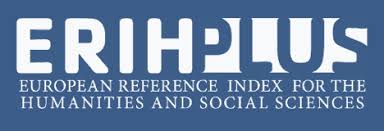№2, 2023
The advancing of information and communication technologies has contributed to their introduction into almost all areas of human activity, as well as the field of demography. The advent of such a field as electronic demography has become a precondition for the improvement of an electronic demographic system on the e-government platform. Demography is a multidisciplinary field of science, and along with other areas, it also includes linguistic demography. Therefore, in the electronic demographic system, along with other segments, there is a segment of linguistic demography. Each area in the data warehouse (DW) of the electronic demographic system has its own data mart (DM). This article highlights several complications in the formation of DM of linguistic demography. These complications are linked to the fact that linguists-researchers offer several approaches to the definitions of the notions of “language” and “dialect”. Moreover, when establishing a language indicator in a country, one of its three options can be approved - as a native language, as a language of everyday communication or as a language of use. In this regard, certain difficulties arise in the establishment of a segment of linguistic demography in the electronic demographic system. This article shows the complications of establishing linguistic demography and presents certain proposals for their solution (pp.68-74).
Alguliyev R. M., Aliguliyev R. M., Yusifov F. F., Alakbarova I. Y. (2019). Formation of electronic demography as an effective tool for social research and monitoring of population data / Issues of state and municipal management. 4, 61–86. (in Russian)
Azizov E. (1999). New classification of dialects of the Azerbaijani language / E. Azizov // Turkology. 352 p. (in Azerbaijani).
Codd, E.F., Codd, S.B., Salley, C.T. (1993). Providing OLAP (on-line Analytical Processing) to User-analysts: An IT Mandate, Codd & Date, Inc., 32, 1-24.
Decree of the president of the Republic of Azerbaijan on the approval of the State Program on the use of the Azerbaijani language in accordance with the requirements of the time and the development of linguistics in the country. 2013.
https://e-qanun.az/framework/25537 (in Azerbaijani).
Dialeсt. https://old.bigenc.ru/linguistics/text/4046120
Kandler A. (2009). Demography and Language Competition. Human Biology: 81(3), 181-210.
http://digitalcommons.wayne.edu/humbiol/vol81/iss2/5
Koryakov Yu. (2017). The problem of “language or dialect” and an attempt of a lexical and statistical approach // Problems of Linguistics. 6, 79-101. Languages of the world.
https://www.ethnologue.com/
Nabibayova G. (2023, a). Ensuring information security of OLAP-containing distributed electronic systems using blockchain technology Information Technologies. 29(5), 250-256. (in Russian)
Nabibayova G. (2023, b). Issues of linguistic demography formation on the national egovernment platform.
Pauwels A. (2016). Language Maintenance and Shift. Publisher: Cambridge University Press. p. 220
Shiraliyev M. Fundamentals of Azerbaijani dialectology / M. Shiraliyev. Baku, 1967. 420 p. (in Azerbaijani).
Wichmann S. (2019). How to Distinguish Languages and Dialects. Computational Linguistics, 45(4), 823–831.
https://aclanthology.org/J19-4007/
Yakovleva E. (2017). Migrations: a hypothetical view of the linguistic future of modern Europe.
https://cyberleninka.ru/article/n/migratsii-gipoteticheskiy-vzglyad-na-yazykovoe-buduschee-sovremennoy-evropy (in Russian)





.jpg)









